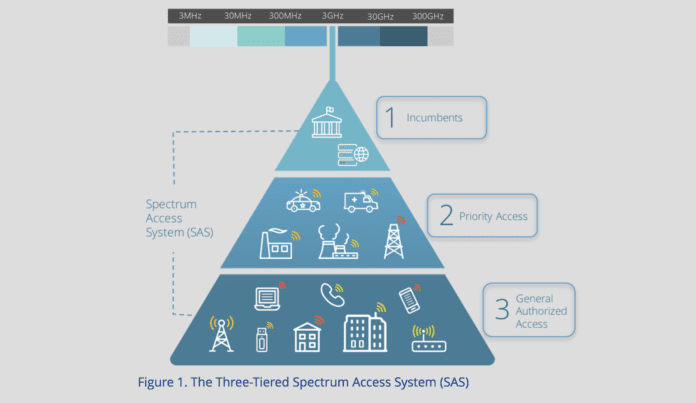From CBRS in the U.S. to shared spectrum for 5G globally
More mobile data traffic means more capacity means more spectrum. Around the world, telecoms regulators are working to enable 5G deployments by opening up a wide mix of spectrum for use by service providers. In the U.S. the Federal Communications Commission is planning to auction millimeter wave frequencies later this year and in 2019, and is also considering how to make available shared access to spectrum in the 3.5 GHz Citizens Broadband Radio Service (CBRS) band.
As it relates to CBRS, the industry is ready to go; the FCC is still working through its process of determining licensure term length and geographic coverage area. Companies like Federated Wireless have done the heavy-lifting of developing a spectrum access system that dynamically prioritizes spectrum access based on the prioritization level of the user. But although the interest in the U.S. is on 3.5 GHz, that doesn’t mean shared access spectrum is only for CBRS.
FCC Commissioner Brendan Carr, speaking last month at an event hosted by Wiley Rein LLP, said, “It’s an interesting idea that we are in part testing in the 3.5 GHz regime. We’ll see how that rolls out, and if it’s working great, we’ll see if there are other applications.”
He continued: “I’m excited about it because my position has always been, we need another tool in the toolbelt. We’ve got exclusive use…and on the other hand, we have very low-barrier-to-entry unlicensed Wi-Fi. The idea is that 3.5 is going to be something in between them. The goal in the proceeding is to make sure we do, in fact, get something that is between those two ideas.”
To see how spectrum sharing tech can be applied beyond CBRS, Federated Wireless and small cell vendor Airspan Networks are collaborating to support 3.5 GHz “while also offering a clear path for unlocking additional spectrum bands for the proliferation of 5G technologies and global adoption of shared spectrum solutions.”
Federated provides a key piece of virtually all CBRS trials, while Airspan has gained a lot of mindshare this year with its work with Sprint on the Magic Box plug-and-play small cell, which won awards from the GSMA and Small Cell Forum.
“Our joint goal is to explore the boundaries of small cell technology in order to lay the foundation for 5G, cost-effectively adding bandwidth to mobile networks, thus enabling massive densification,” Airspan CEO Eric Stonestrom said in a statement. “Federated Wireless; unique model and leadership in the field of shared spectrum solutions complements Airspan’s market-leading position in Advanced LTE small cells.”
The companies highlighted shared spectrum as “critical to achieving the quality of experience and bandwidth requirements promised by 5G. Federated’s Todd Gore, VP of Sales, said the partnership “will greatly expand and improve advanaced 4G networks today, and 5G networks tomorrow.”

